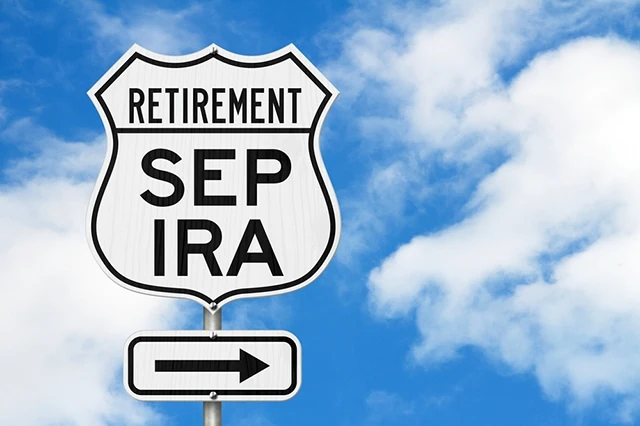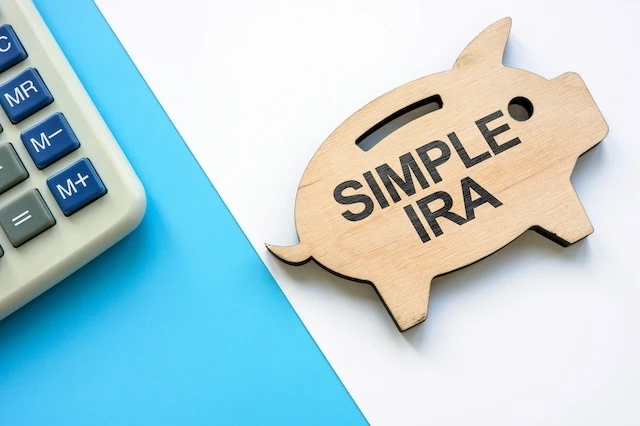If you’re actively saving for retirement, now’s a good time to review the contributions made so far this year to your retirement accounts to see if you’re on track to meet your 2024 (and 2025!) retirement savings goals.
There are many types of retirement accounts. The two most popular are individual retirement accounts (IRAs) and 401(k) plans (or similar plans). If you’re self-employed, own a small business, or work for a small business, perhaps your retirement savings are tucked in a solo 401(k), Simplified Employee Pension (SEP) IRA, or Savings Incentive Match Plan for Employees (SIMPLE) IRA. You can also use a health savings account (HSA) to save for retirement.
However, which type of retirement account you’re using isn’t the most important thing, as long as you’re stuffing as much money as you can handle into one or more of them. That’s because each account comes with its own blend of tax breaks that makes their use a no-brainer for anyone saving for retirement.
Immediate tax breaks are available for contributions to some of these accounts, and all of them offer either tax-free or tax-deferred growth (depending on whether it’s a “traditional” or “Roth” account). There’s even a special tax credit—the Saver’s Credit—that’s worth up to $1,000 ($2,000 for married couples filing a joint tax return) for low- and moderate-income retirement savers.
So, what should you do near the end of each year to make sure you’re taking full advantage of these retirement accounts? At this time of year, you should be focusing on two things: The limits and the deadlines for making contributions to your retirement accounts for the 2024 tax year, and then planning for 2025 deadlines and contribution limits second.
So, to ensure you’re making the most of your retirement dollars, let’s go over the 2024 and 2025 contribution limits and deadlines for all the most common types of retirement accounts.
Table of Contents
401(k) and Similar Plans
A 401(k) plan is a tax-advantaged account offered by businesses to help eligible employees save money for retirement. Employees who choose to participate in the plan can contribute to their personal 401(k) account through payroll deductions.
Don’t have a 401(k) plan at work? Maybe your employer offers a 403(b) or 457 plan instead. If you work for the federal government, there’s the Thrift Savings Plan. These are all similar to a 401(k) plan.
2024 Contribution Limits for 401(k) and Similar Plans (and 2025): For 2024, the maximum amount employees under 50 years old can put in a 401(k) or similar account is $23,000 ($23,500 in 2025).
Workers aged 50 and older can also put in an additional $7,500 in “catch-up” contributions (for a total of $30,500 in 2024 and $31,000 in 2025). A new $11,250 catch-up contribution limit is available for people achieving the age of 60, 61, 62, or 63 in 2024, leading the total contribution in the year to $34,250 ($34,750 in 2025). A special rule for 457 plan participants within three years of their full retirement age increases the catch-up contribution limit to $23,000 (i.e., double the basic max) in 2024 ($23,500 in 2025).
You also can’t contribute more than your compensation for the year.
These limits apply to all your 401(k) or similar accounts. So, for example, if you switched jobs this year and contribute to two separate accounts in 2024, the total amount can’t exceed the $23,000 or $30,500 cap (or $23,500 and $31,000 in 2025, unless you qualify for the $11,250 catch-up contribution, pushing these limits to $34,250 and $34,750 in 2024 and 2025, respectively).
In addition, if your employer offers a matching contribution, the combined total of employee and employer contributions to your account in 2024 can’t exceed $69,000, or $76,500 for people making catch-up contributions (other than for 457 plans) and $70,000 and $77,500 in 2025.
(We’ve got a lot more detail on the 2024 and 2025 401(k) contribution limits.)
Deadline for 2024 401(k) Plan Contributions: If you haven’t yet maxed out your 401(k) this year, you don’t have much time left. You only have until Dec. 31, 2024, to plunk more money in your 401(k) account for the 2024 tax year.
However, contributions to your 401(k) account are taken out of your paycheck and deposited into your account by your employer. You can’t just send money to the 401(k) plan administrator on your own and have it deposited into your account (as you can with an IRA). If you’re not sure how to have your 401(k) contribution increased, contact your employer’s HR department or the plan administrator.
IRAs
An IRA is a retirement savings account you set up on your own through a brokerage firm. You can open a traditional IRA or a Roth IRA, and each option has its own tax advantages.
You can fund your IRA with an ACH transfer from your bank or a personal check. Bank transfers can be made online through your brokerage account or you can send a check directly to your brokerage firm.
You can also roll over funds from an existing retirement account into an IRA.
2024 and 2025 Contribution Limits for IRAs: When compared to 401(k) plans, the contribution limits are much lower for IRAs, and can even be reduced (potentially down to $0) for Roth IRA contributions if your income is too high.
For the 2024 and 2025 tax years, you can only put $7,000 in an IRA if you’re under age 50. If you’re at least 50 years old, you can top that off with an extra $1,000 catch-up contribution. As with 401(k) plans, the annual limit is a combined limit that applies to all your IRAs.
This year’s annual contribution limit for Roth IRAs starts to phase out if your modified adjusted gross income is:
— $230,000 to $240,000 if your tax filing status is married filing jointly or surviving spouse in 2024 ($236,000 and $246,000 in 2025)
— $146,000 to $161,000 if your filing status is single, head of household, or married filing separately and you didn’t live with your spouse at any time during the year in 2024 ($150,000 and $165,000 in 2025)
— $0 to $10,000 if your filing status is married filing separately and you lived with your spouse at any time during the year
(Looking for more details? Check out all the 2024 and 2025 IRA contribution limits.)
Deadlines for 2024 and 2025 IRA Contributions: If you’re a procrastinator, the good news about IRAs is you actually have until April 15, 2025, to put money in an IRA for the 2024 tax year (April 17 for residents of Maine and Massachusetts) and April 15, 2026 for tax year 2025.
But why wait? If you can swing it, the better option is to contribute to an IRA before the end of the year and start reaping the benefits of tax-deferred growth (traditional IRA) or tax-free growth (Roth IRA) right away.
Health Savings Accounts
HSAs are primarily used to offset medical costs now and in the future. However, once you turn 65, money in an HSA can be used for any purposes without penalty. As a result, many people use HSAs as a supplemental retirement savings account.
2024 and 2025 Contribution Limits for HSAs: For 2024 and 2025, the HSA contribution limits are:
— $4,150 if you have self-only coverage under a high-deductible health plan (HDHP) in 2024 ($4,300 in 2025)
— $8,300 if you have family coverage under an HDHP in 2024 ($8,550 in 2025)
If you’re at least 55 years old at the end of the year, an additional $1,000 catch-up contribution is allowed.
(If you’re selecting next year’s health care benefits now, you’ll also want to know the 2024 HSA contribution limits.)
Deadline for 2024 and 2025 HSA Contributions: As with IRAs, you have until April 2025 to stash money in an HSA for the 2024 tax year and April 2026 for the 2025 tax year. But, again, you’re losing out on tax-free growth by putting it off until then.
Related: How to Invest HSA Funds
Solo 401(k) Plans
You can open a solo 401(k) if you’re self-employed or own a business with just one employee who is your spouse. (Solo 401(k) plans are sometimes called one-participant 401(k) plans, individual 401(k) plans, or uni-401(k) plans.)
Solo 401(k) plans are basically “regular” 401(k) plans, but as a self-employed person or small business owner you can make contributions as both an employer and an employee.
2024 and 2025 Contribution Limits for Solo 401(k) Plans: You can contribute up to $23,000 to a solo 401(k) as an employee in 2024 if you’re under age 50, or up to $30,500 if you’re aged 50 and over ($23,500 and $31,000 in 2025, respectively. Can make a $11,250 catch-up contribution if you turn 60 – 63 in the 2024 or 2025 tax years instead of the $7,500 for 50 – 59 year olds).
You can also contribute up to 25% of your compensation as an employer in 2024, but the combined total of all 2024 contributions can’t exceed $69,000, or $76,500 if you’re at least 50 years old ($70,000 or $77,500 in 2025).
Deadline for 2024 and 2025 Solo 401(k) Plan Contributions: The deadline for contributing to a solo 401(k) is a bit different than for regular 401(k) plans. You generally have until April 15, 2025 (April 17 for residents of Maine and Massachusetts), to fund a solo 401(k) for the 2024 tax year (or April 2026 for the 2025 tax year).
However, if you request an extension to file your 2024 federal income tax return, you’ll have until Oct. 15, 2025, to put money in a solo 401(k) account and have it count toward your 2024 limit. It would be Oct. 15, 2026 for the 2025 tax year.
SEP IRAs
Like solo 401(k) plans, SEP IRAs are available to small businesses owners and self-employed people. If you’re self-employed, you simply contribute to your own SEP IRA. However, if you’re a business owner with employees, you must also set up and contribute to a SEP IRA for each eligible employee. The employees can’t contribute their own money to their account, though.
In all cases, contributions are based on a percentage of the account holder’s compensation. The self-employed person or business owner sets the percentage each year. However, for business owners with employees, the contribution percentage must be the same for all eligible workers.
2024 and 2025 Contribution Limits for SEP IRAs: The annual contribution limit for SEP IRAs is fairly straightforward. For 2024, total contributions to a SEP IRA can’t exceed $69,000 or 25% of the first $345,000 of compensation, whichever is lower ($70,000 and $350,000 in 2025, respectively).
Catch-up contributions aren’t allowed.
(We have the 2024 and 2025 SEP IRA contribution limits, too.)
Deadline for 2024 and 2025 SEP IRA Contributions: The deadline for SEP IRA contributions is the same as the deadline for solo 401(k) deposits. For 2024 contributions, you have until April … or until Oct. if you extend the filing due date for your 2024 return. The same is true for 2025 contribution deadlines.
SIMPLE IRAs
A SIMPLE IRA is another option for self-employed people and small businesses owners (generally up to 100 employees) looking for a retirement savings vehicle. Unlike SEP IRAs, both employers and employees can contribute to a worker’s SIMPLE IRA.
In fact, employer contributions are actually required with SIMPLE IRAs.
2024 and 2025 Contribution Limits for SIMPLE IRAs: For 2024, an employer must contribute one of the following to each eligible employee’s SIMPLE IRA account:
— A dollar-for-dollar match of the employee’s contribution, up to 3% of the employee’s compensation
— 2% of the first $345,000 of the employee’s compensation ($350,000 in 2025)
In addition, workers under 50 can contribute up to $16,000 to a SIMPLE IRA for the 2024 tax year ($16,500 in 2025). Catch-up contributions up to $3,500 (for a total of up to $19,500) are allowed for 2024 if you’re 50 or older ($20,000 in 2025).
Deadline for 2024 and 2025 SIMPLE IRA Contributions: When contributions are due depends on the type of contribution. As with 401(k) plans, contributions for 2024 must be made by Dec. 31, 2024 (2025 contributions are due by Dec. 31, 2025). Employee contributions are made through payroll deductions (again, like 401(k) contributions). So, if you want to increase your contribution amount, contact your employer to see how that’s done.
Employers have more time to complete the mandatory contributions to their employees’ SIMPLE IRA accounts. Those contributions are due by the deadline for filing the business’s federal income tax return (including extensions) for the taxable year for which the contributions are made.
Like Young and the Invested’s Content? Be sure to follow us.
Related: 12 Best Long-Term Stocks to Buy and Hold Forever

As even novice investors probably know, funds—whether they’re mutual funds or exchange-traded funds (ETFs)—are the simplest and easiest ways to invest in the stock market. But the best long-term stocks also offer many investors a way to stay “invested” intellectually—by following companies they believe in. They also provide investors with the potential for outperformance.
So if your’e looking for a starting point for your own portfolio, look no further. Check out our list of the best long-term stocks for buy-and-hold investors.
Related: The Best Fidelity ETFs for 2024 [Invest Tactically]

If you’re looking to build a diversified, low-cost portfolio of funds, Fidelity’s got a great lineup of ETFs that you need to see.
In addition to the greatest hits offered by most fund providers (e.g., S&P 500 index fund, total market index funds, and the like), they also offer specific funds that cover very niche investment ideas you might want to explore.
Related: 9 Best Monthly Dividend Stocks for Frequent, Regular Income

The vast majority of American dividend stocks pay regular, reliable payouts—and they do so at a more frequent clip (quarterly) than dividend stocks in most other countries (typically every six months or year).
Still, if you’ve ever thought to yourself, “it’d sure be nice to collect these dividends more often,” you don’t have to look far. While they’re not terribly common, American exchanges boast dozens of monthly dividend stocks.
Please Don’t Forget to Like, Follow and Comment

Did you find this article helpful? We’d love to hear your thoughts! Leave a comment with the box on the left-hand side of the screen and share your thoughts.
Also, do you want to stay up-to-date on our latest content?
1. Follow us by clicking the [+ Follow] button above,
2. Subscribe to The Weekend Tea, our weekly newsletter to read more about investing, spending, taxes, and more, and
3. Give the article a Thumbs Up on the top-left side of the screen.
4. And lastly, if you think this information would benefit your friends and family, don’t hesitate to share it with them!










